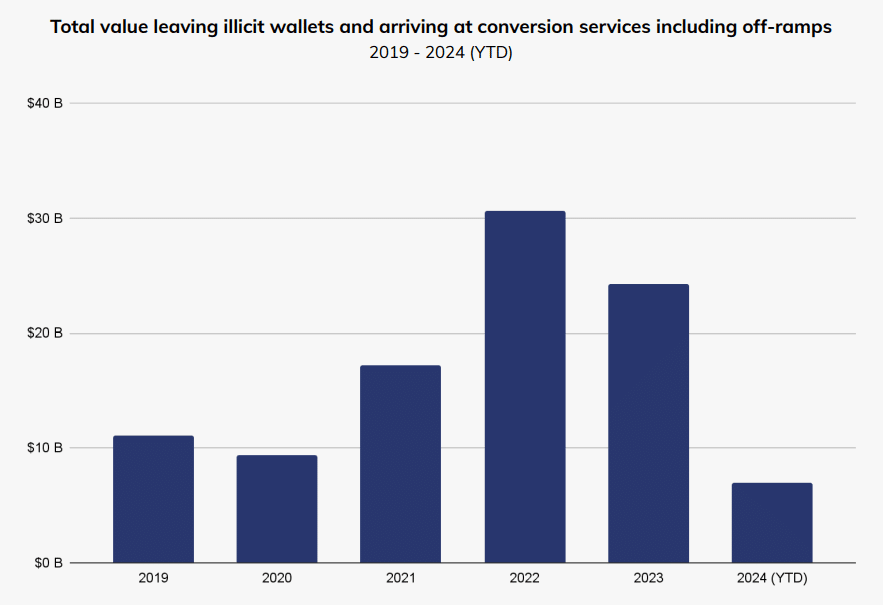Nearly 30% of all crypto traced from illicit addresses since 2019 ended up at sanctioned services like Russia’s crypto exchange Garantex, according to Chainalysis. Cryptocurrency exchanges have received nearly $100 billion worth of crypto from well-known illicit addresses since 2019, highlighting a growing lack of international cooperation on anti-money laundering measures.
According to blockchain forensic firm Chainalysis, nearly 30% of all crypto from illicit addresses eventually ended up at sanctioned services such as Russia‘s crypto exchange Garantex. The highest amount was recorded in 2022 when $30 billion of identified “dirty crypto” interacted with sanctioned services.

The data includes only the totals moved from illicit sources to crypto exchange services, Chainalysis points out, adding that it doesn’t include the value “sent and received among intermediaries,” which can involve “tens or hundreds of individual transactions.”
The New York-headquartered firm says an “increasing portion” of illicit funds passing through intermediary wallets is concentrated not in traditional crypto like Bitcoin (BTC) or Ethereum (ETH), but in stablecoins, which now account for “the majority of all illicit transaction volume.”
Despite the rise of stablecoin usage, their issuers have the ability to freeze funds, with Tether, the largest stablecoin issuer, having frozen an estimated 1,600 addresses holding funds worth approximately $1.5 billion worth of USDT, Chainalysis revealed.
That development came shortly after Venezuela’s state-run oil company PDVSA increased its use of USDT in crude and fuel exports amid tightening U.S. sanctions. Venezuelan oil minister Pedro Tellechea noted at the time that the country uses “different currencies, according to what is stated in contracts,” with some contracts preferring cryptocurrency as a payment method.
Following Tellechea’s statement, Tether publicly reiterated its commitment to adhere to the OFAC SDN list and announced plans to ensure sanctioned addresses are promptly frozen.










